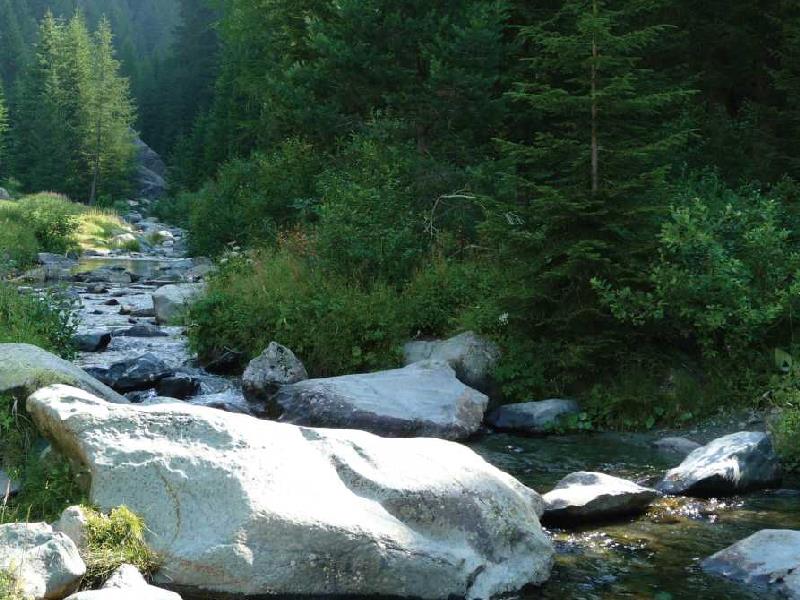by Michele Comi
Best time to visit
Summer
Autumn
Gradient
 100 metres
100 metres
100 metres
Distance
2 km
Walk time
1 h
... during our discussion, if I hadn't put forward the idea of attempting the complete ascent of the Lua, and then another flat stretch dominated by a large cross, to look for a large hole (which they assured me was in the bare rock), which could be the giants' cooking pot.
In fact, once we had passed the flat area of the crucifix and reached a tiny chapel, we followed the precise directions given to us by the pot carriers, and picked the right-hand path of the two paths which lead to Campo Franscia, and after we had actually taken a hundred steps, we heard the man in front of us shout.
To the left of the path a circular chamber opened up in a large, smooth rock, filled in the bottom by grass and soil.
We were standing right in front of one of the large giants' pots.
...The man and his companion went inside and began to use their hands to clear it.
I ran to fetch a spade from the nearby asbestos quarry and Professor Besta remained to give advice and to somehow organise the little team of workers.
Thus, at the bottom of the ruins we discovered the stones which, in bygone times, had presumably lined the walls and formed the dome.
They were smooth, almost round, and after we had cleaned and observed them, we put them back in their respective pots, where they had the right to remain*.
-
* Giuseppe Nolli,
In Valmalenco,
Milan 1907
The first document found so far to testify the presence of the Giants' Pots in the Valmalenco dates back to 1907, when Giuseppe Nolli tells in the notes on his journey how he found numerous unusual cavities in the rock along the path leading from Monte dell’Ova to Franscia.
The formation of this particular phenomenon was of a much older origin.
15,000 years ago, the large glaciers of the Bernina range still flowed in a large, single tongue, which descended along the Valmalenco as far as the villages in the valley bottom and beyond.
Even the basin of Franscia was completely submerged by a thick covering of ice.
 Torrent at Campo Franscia.
Torrent at Campo Franscia.
During the summer, the melted water from the glacier gave life to numerous streams which, as they ran down towards the valley, tried to open a passage towards the light.
The swirling water, carrying along with it a mixture of sand, gravel and small stones, acted as a gigantic lathe.
Starting from a weak point in the rock, the process gradually triggered a circular erosion, which exponentially multiplied the erosive action and over time created numerous glacial wells.
The name "giants' pot" came from the similarity of these unusual holes to large saucepans, which popular imagination saw as enormous pots in which to heat the food of gigantic beings, the giants.